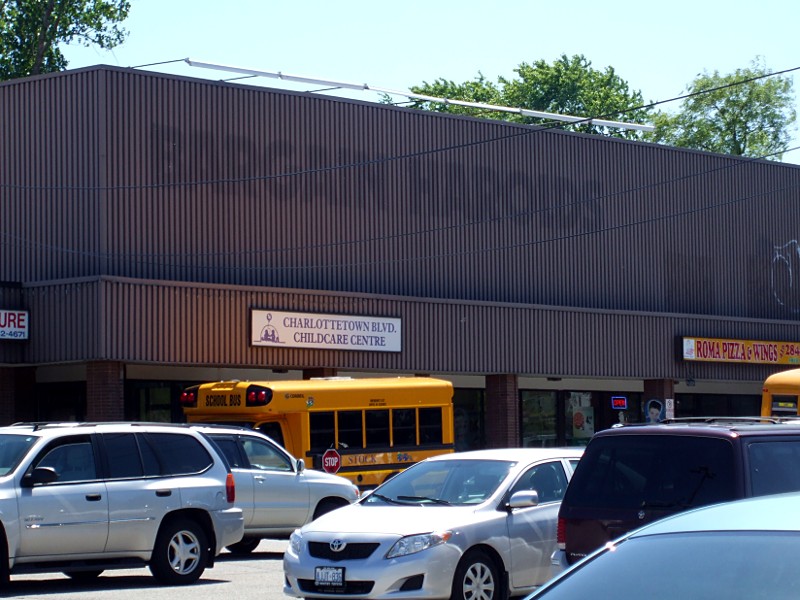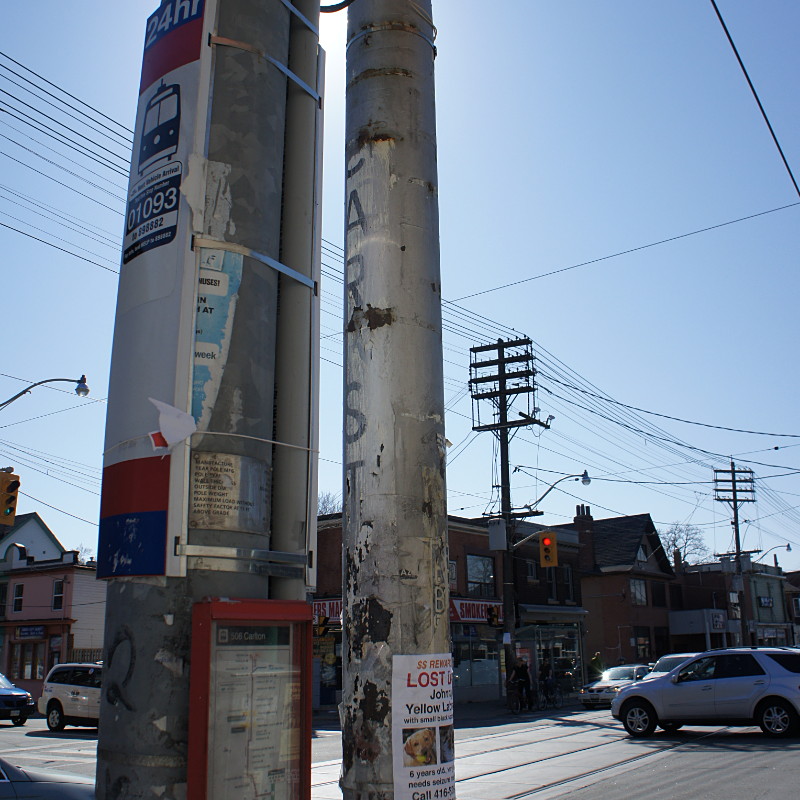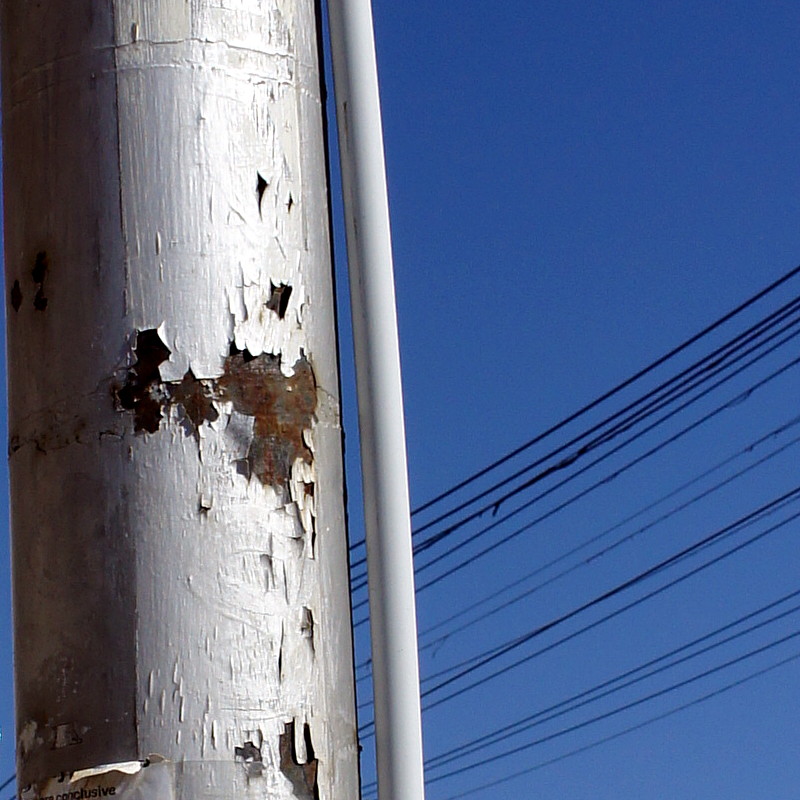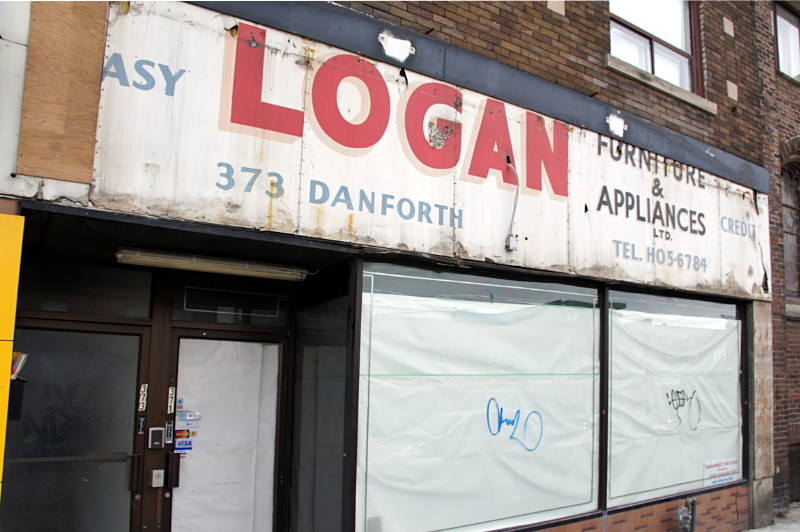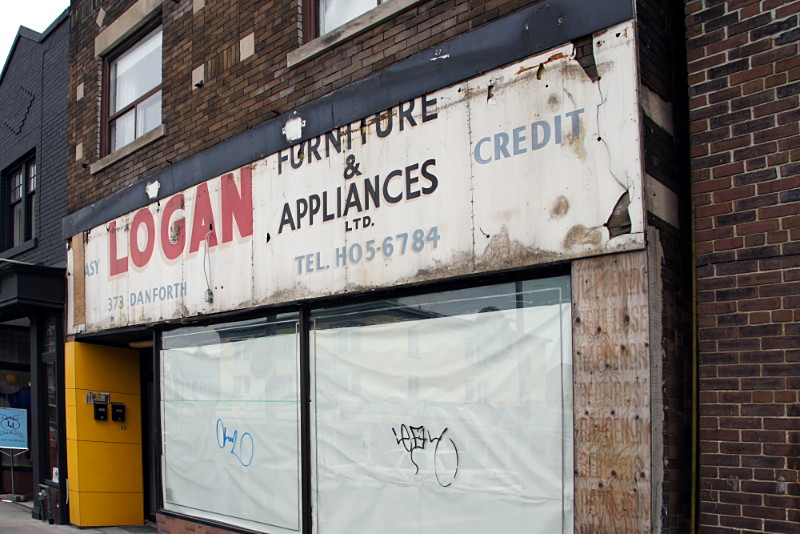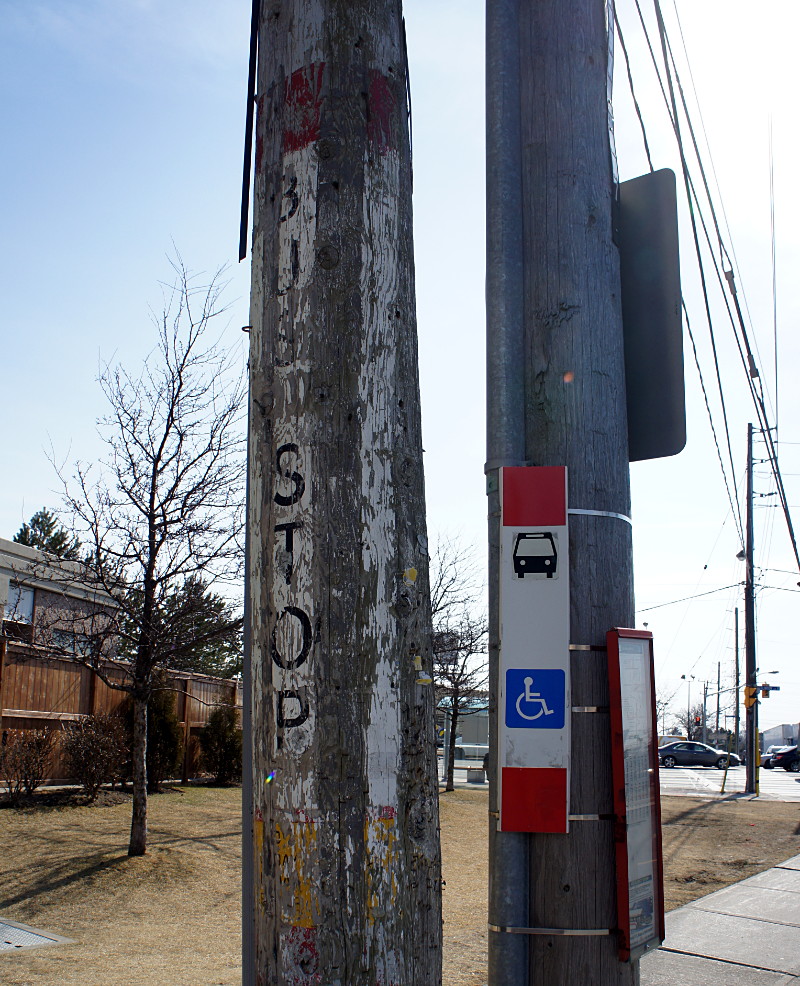
Before the TTC started marking bus stops by strapping mass-produced metal* vinyl signs onto poles, they used stencils and paint. I’m not sure when they stopped doing that, but I do vaguely remember the metal signs becoming standard in maybe the early 80s. Most of those old painted signs have disappeared or faded with time, but a few of them are still kicking around on old streetcar and bus routes. The one above is painted on an old utility pole on the east side of Sloane Avenue just north of Eglinton Avenue East. The old pole has been cut down to just above the ghost stop, leaving it with no role other than displaying a bit of old paint. As you can see in this Google Street View, the metal sign was strapped over the painted one before the new pole was installed.
Another TTC ghost is on the southwest corner of Kingston Road and Glen Manor Drive:
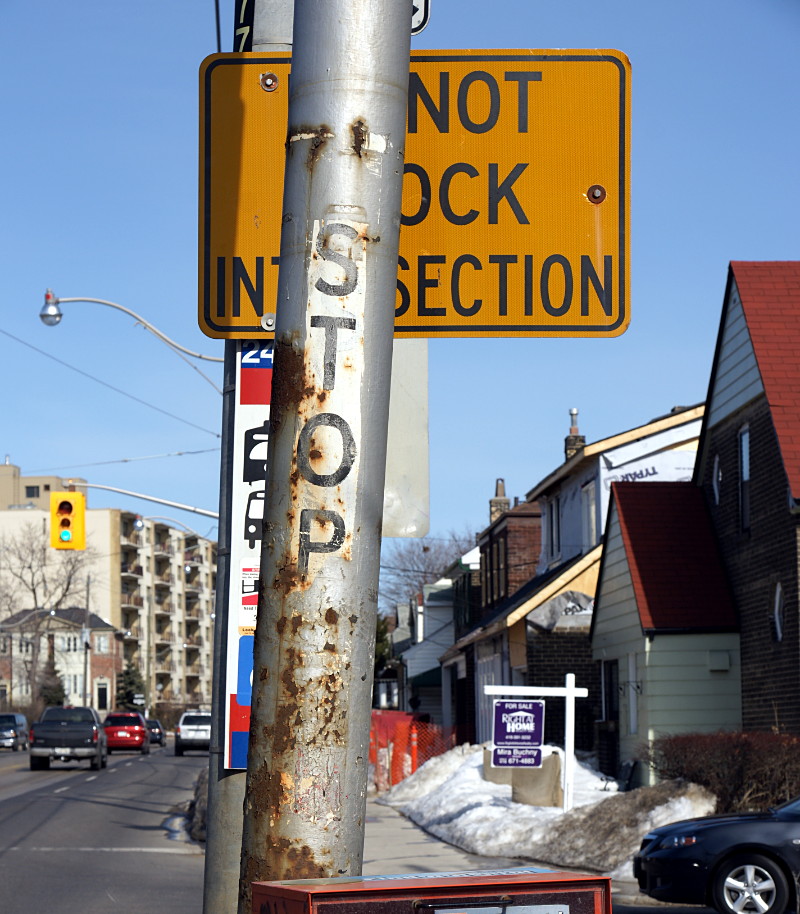
As you can tell by the snow on the lawns in the background, the picture wasn’t taken this winter. It looks like this stop was originally on a TTC-specific pole that carried the trolley wire for powering streetcars on this line. I’m not sure why the old pole survived; like the one on Sloane above, it seems to serve no specific function any longer.
Without a doubt, the best TTC ghost stops were in the Wychwood streetcar barns, where decommissioned poles were cut up and used as building material to shore up the floor above:
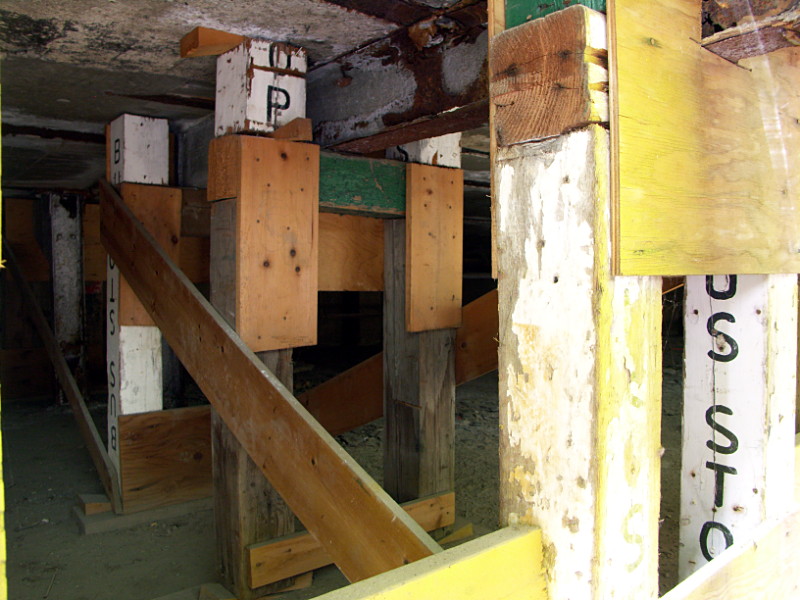
It’s extremely unlikely that any part of these ad hoc posts and beams survived the conversion of the buildings into the Artscape Wychwood Barns, but it was an amazing surprise to see when it was there.
* Update, March 16, 2012: The newer non-painted signs are actually vinyl, not metal.
